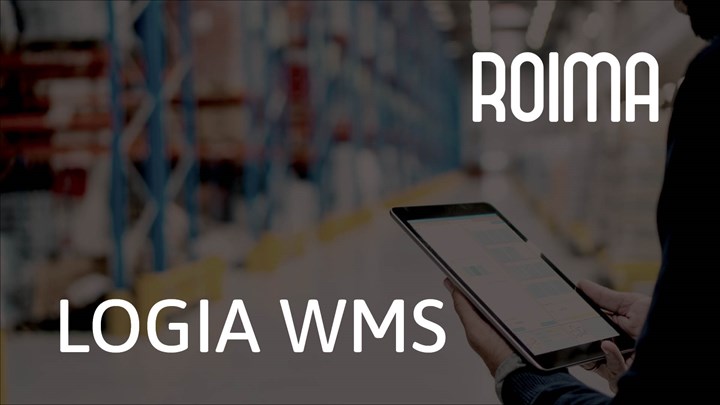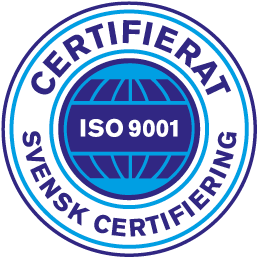Linak: WMS controls production warehouse and ensures optimal flow of goods
LINAK is one of the world’s leading manufacturers of electrical linear motion systems, the development of linear actuators, and control systems for actuators. The products are used for height-adjustable desks, beds, and wheelchairs, for example. The group is headquartered in Guderup on Als, Denmark and uses an area of 38,000 m2, covering both its development and production facilities. A large part of the production takes place at the factory in Denmark. The company is present in approximately 35 countries worldwide either through subsidiaries or distributors and has about 1,600 dedicated employees.
LINAK is a make-to-order company that offers a wide and specialized product range that places high demands on production. Each customer’s order becomes at least three individual production orders. As a result, there are many low-quantity orders.
Project New Factory
LINAK initiated a project with the goal of securing an economic basis for continuing to operate mechanical processing in Denmark. The project is called “New Factory.” The focus of the project is on production. Productivity should be increased, and process costs should be reduced. A major part of the project has been reducing processing cycle times while also reducing internal transportation, handling, and packing. Large parts of the mechanical processing tasks are automated, so the production layout has changed significantly. An intermediate goods warehouse was partially automated with the introduction of a vertical storage lift and LOGIA warehouse management system. In particular, the introduction of new technology and increased automation have helped to lower process costs, thus maintaining and insourcing jobs.
New production layout
The first step of the New Factory project was the total reorganization of LINAK’s mechanical processing tasks. Processes across the entire department had to be evaluated, rather than just optimizing individual processes. To ensure that the planned solution would have enough capacity despite very unpredictable and flexible production rates, a full-scale simulation based on one week’s production was conducted. This laid the foundation for the concrete targets for cycle and handling times.
Cycle times were reduced by 40%
New automatic production lines improved LINAK’s cycle times by up to 40%. A new production planning system (MES) binds the entire production process together. It receives production orders from Axapta, processes data, makes detailed plans, sends data to machine controls, and reports back to Axapta.
The automatic production lines automatically receive order information from the MES, and they automatically report back when the order is completed. Data on each item produced is passed through an interface to the next stage of the process. The machine control in all lines ensures fast changeover time, minimal material waste, flexibility, and the ability to process orders all the way down to one unit. A handling robot is located after all machine lines and packs all components into baskets before they are transported to the intermediate goods warehouse. This ensures that the components are not scratched, that they are cleaned or emptied of emulsion, that there is always the correct number in the basket, and that all baskets are reported as finished correctly to the MES. The robots can identify each item and sort them into multiple baskets/orders. This is an advantage as two simultaneous orders can be made on several of the lines. When packing is completed, the robots ensure that baskets are automatically changed and transported to the intermediate goods warehouse.
Optimal flow from production to warehouse
It is difficult to ensure that all components for an assembly production are finished at the same time. It is therefore necessary to have an intermediate goods warehouse. The warehouse is partly automated and consists of a vertical storage lift and a pallet rack for half-pallets. The warehouse is managed with the LOGIA warehouse management system. The solution is integrated with Axapta. As the components are produced, they are sent directly from the production lines to the intermediate goods warehouse. Then, components are transported in baskets via a driven roller conveyor and truck, respectively, to an undriven roller conveyor. In both cases, the basket ID is scanned so that the sequence of baskets on the tracks is known. When all components for an assembly order have been received in the intermediate goods warehouse, a consolidated removal from storage of all components for a given assembly production can be initiated. The operator is guided to pack all items into an assembly order on one pallet, which is driven by truck to the assembly department.
Intermediate goods warehouse management
Many components pass through the intermediate goods warehouse daily.
They arrive in a random order, are automatically registered via the basket ID, and stored in the vertical storage lift or in the pallet rack warehouse.
The LOOIA warehouse management system manages and prioritizes all activities related to components that have to pass through the intermediate goods warehouse.
The warehouse is operated by one man who, using simple LOGIA display dialogs, is guided through the storage and retrieval of components. LOGIA controls the order in which jobs should be processed; the operator only has to follow the easy-to-understand visual instructions on the screen.
Achieving goals
LOGIA supports LINAK in realizing the New Factory project’s goals through the effective management of:
- Receiving, registering, labeling, and temporarily storing component parts in the warehouse space
- Automatic and total retrieval of components for assembly orders when all components that make up an order are consolidated in the intermediate goods warehouse
- Managing and prioritizing operator-performed warehouse operations
A significant part of the cost reductions has come from staff reductions in internal transportation, handling, and packaging.
Roima’s deliverables
Roima has delivered the controls to the partially automated intermediate goods warehouse, which consists of a vertical storage lift and a manual warehouse area.
LOGIA controls all storage and retrieval and ensures that storage can be carried out quickly and efficiently, while the consolidated retrieval of all components of a given assembly production happen automatically.
Read more about Linak.












